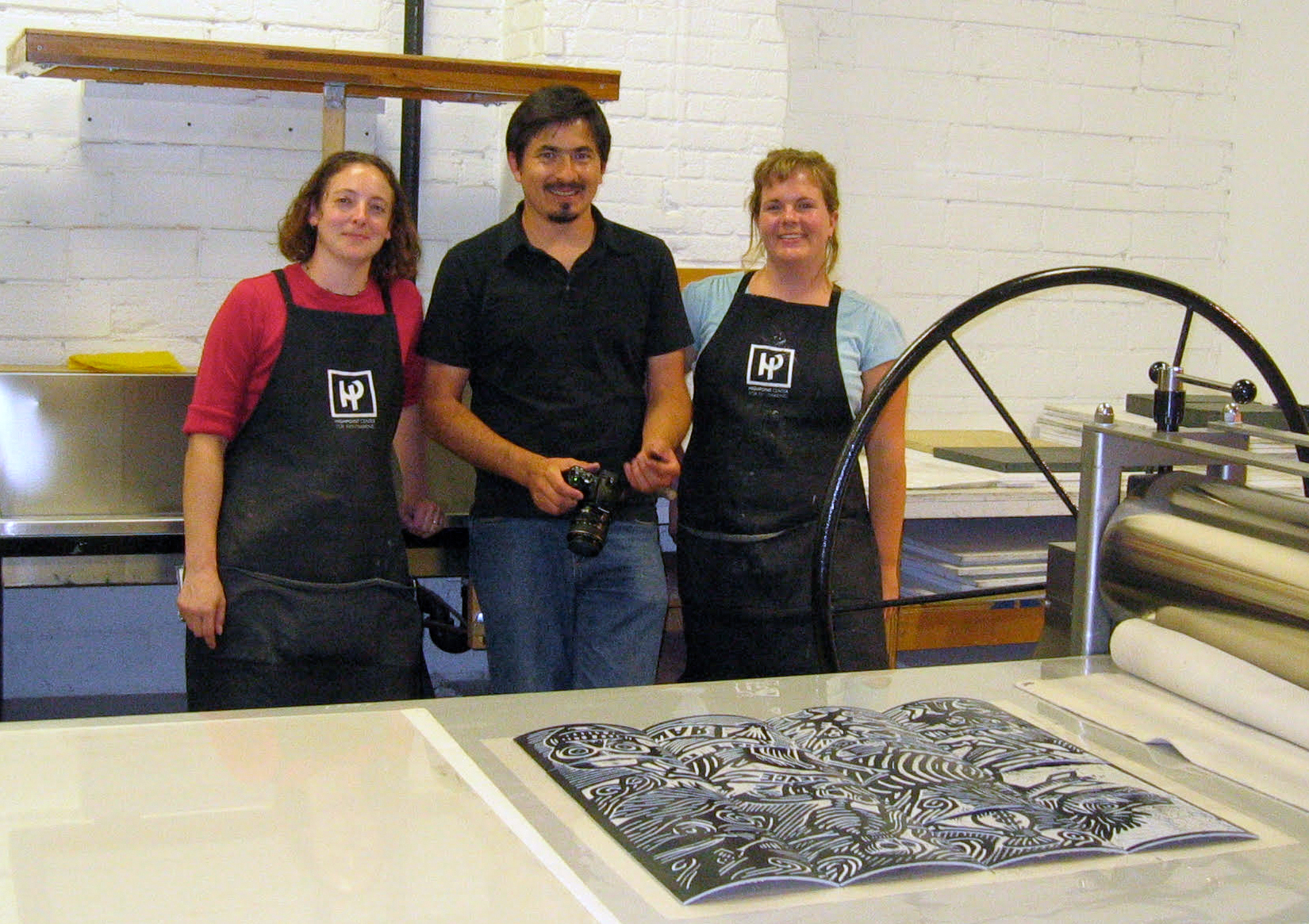Born 1972, Tacámbaro de Codallos, Mexico
Artemio Rodríguez’s woodcuts and linocuts explore the intersections of religion, death, globalization, labor, war, and capitalism. His work ranges from depictions of allegorical figures surrounded by religious and cultural iconography to sweeping views of deforestation, burning and bombed cities, and banquets of the dead. In these, Rodríguez both subtly comments on how to reconcile traditional and popular culture and explicitly imagines the twenty-first-century apocalypse. Aside from his own printmaking practice, Rodríguez has dedicated himself to the promotion of the medium. In a 1948 Chevy Camion that he converted into a mobile printmaking studio, along with his custom-painted 1968 Chevy Impala—known as the Gráficomovil (2008) and Muerto Rider (2005), respectively—Rodríguez provides experiences in printmaking where presses could not otherwise go.
At Highpoint Center for Printmaking Rodríguez curated an exhibition titled “Graphic Reality: Mexican Printmaking Today” (2007), which underscored how contemporary Mexican printmaking and street art engage with traditional Mexican printmaking and imagery. At a lecture and workshop during the exhibition’s opening, participants carved a drawing that Rodríguez had prepared on several linoleum . The collaborative effort resulted in an image titled Galloping Death (2007) (cat. no. 268 ). It features a banner along the bottom that reads simply “WAR / or PEACE,” while above a skeleton on horseback, waving a pistol and bag of money, tramples a crowd of people.
Rodríguez was born in a small valley town in Michoacán, Mexico, with views of the southern Sierra Madre mountains. Though he received a scholarship to study agronomy at the Universidad Autónoma Chapingo in 1984, he instead accepted an apprenticeship with the typographer Juan Pascoe at the Taller Martin Pescador, a book press set up in a hacienda near Rodríguez’s hometown of Tacámbaro. He worked there for four years, learning traditional methods of printing as well as and . In 1994 Rodríguez left for Los Angeles. There, he developed his practice at Self Help Graphics and Art, an East Los Angeles center for printmaking that promotes Chicanx and Latinx artists. In 2002 he cofounded La Mano Gráfica gallery and press in Los Angeles as an artist-run center dedicated to printmaking. In 2008 Rodríguez relocated La Mano Gráfica to Michoacán, reestablishing the press just outside Tacámbaro and the gallery in the nearby town of Pátzcuaro.
Rodríguez currently teaches workshops at La Mano Press, hosts resident artists, and publishes his own editioned prints. His work has been exhibited at SDSU Downtown Gallery, San Diego (2020); Galería de la Librería Carlos Fuentes, Zapopan, Mexico (2019); McNay Art Museum, San Antonio (2019); and Marianna Kistler Beach Museum of Art, Manhattan, Kansas (2017), among other venues. Rodríguez lives and works in Tacámbaro, Mexico.
—Ian Karp

